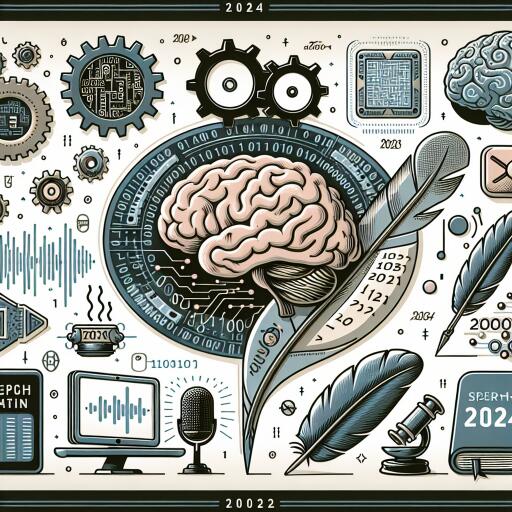Top 10 Natural Language Processing Tools in 2024
Natural Language Processing (NLP) marries artificial intelligence with human language, aiming to enhance the way computers and humans communicate. This field leverages computational linguistics, machine learning, and deep learning to enable computers to process and understand human language in its myriad forms. From digital assistants to analytics, NLP is revolutionizing how we interact with technology.
As we step into 2024, the advancements in NLP tools have been nothing short of remarkable, responding to the increasing demand for sophisticated language processing capabilities. Here’s a look at the top 10 NLP tools carving out the future of human-computer communication:
- Natural Language Toolkit (NLTK): A pioneer in the world of Python NLP libraries, NLTK is revered for its comprehensive resources that facilitate a wide array of NLP tasks.
- MonkeyLearn: This cloud-based tool is making waves with its pre-built models for text classification, sentiment analysis, and more, presenting a streamlined approach to NLP that caters to users of all skill levels.
- spaCy: Renowned for its speed and accuracy, spaCy offers an impressive array of features for syntactic and semantic analysis, alongside support for multiple languages.
- Stanford CoreNLP: Developed by Stanford University, this suite of tools is distinguished by its robust performance across a variety of NLP tasks, including part-of-speech tagging and named entity recognition.
- MindMeld: Integrated into the Cisco ecosystem, MindMeld excels in creating conversational interfaces and chatbots, boasting advanced NLP features for a seamless interaction experience.
- Amazon Comprehend: A key player from Amazon Web Services, this tool delivers versatile NLP capabilities, from sentiment analysis to topic modeling, through an accessible cloud-based platform.
- OpenAI: The organization behind GPT-3 offers a suite of cutting-edge NLP tools, enabling developers to leverage powerful language models for content creation, translation, and summarization.
- Microsoft Azure: Through its Cognitive Services, Azure presents a broad spectrum of NLP functionalities, encouraging the integration of AI into applications with ease.
- Google Cloud: Google’s formidable NLP services, concentrated within its Natural Language API, empower developers to extract structured data from text, analyze sentiment, and recognize entities efficiently.
- IBM Watson: A stalwart in AI, Watson’s NLP tools shine in natural language understanding and sentiment analysis, providing tailored solutions across various industries.
Exploring the Impact of NLP
NLP serves as a backbone for artificial intelligence, enabling nuanced interactions between humans and machines. It plays a critical role in automating and interpreting massive volumes of unstructured text and voice data across numerous sectors.
In diverse industries, from customer service to marketing, NLP tools are unlocking new possibilities by processing data like support tickets, social media feeds, and survey responses. Beyond handling multiple languages and dialects through extensive datasets and transfer learning, these tools offer tailored functionalities that make them indispensable in today’s data-driven landscape.
When evaluating NLP tools for specific applications, consider factors like linguistic versatility, customization, ease of use, and regulatory compliance to ensure they meet your project’s unique requirements.
As we navigate through 2024, the evolution of NLP tools continues to redefine the boundaries of what’s possible in the realm of human-computer interaction. The tools listed above represent the pinnacle of innovation in NLP, promising to enhance our digital experiences significantly.










